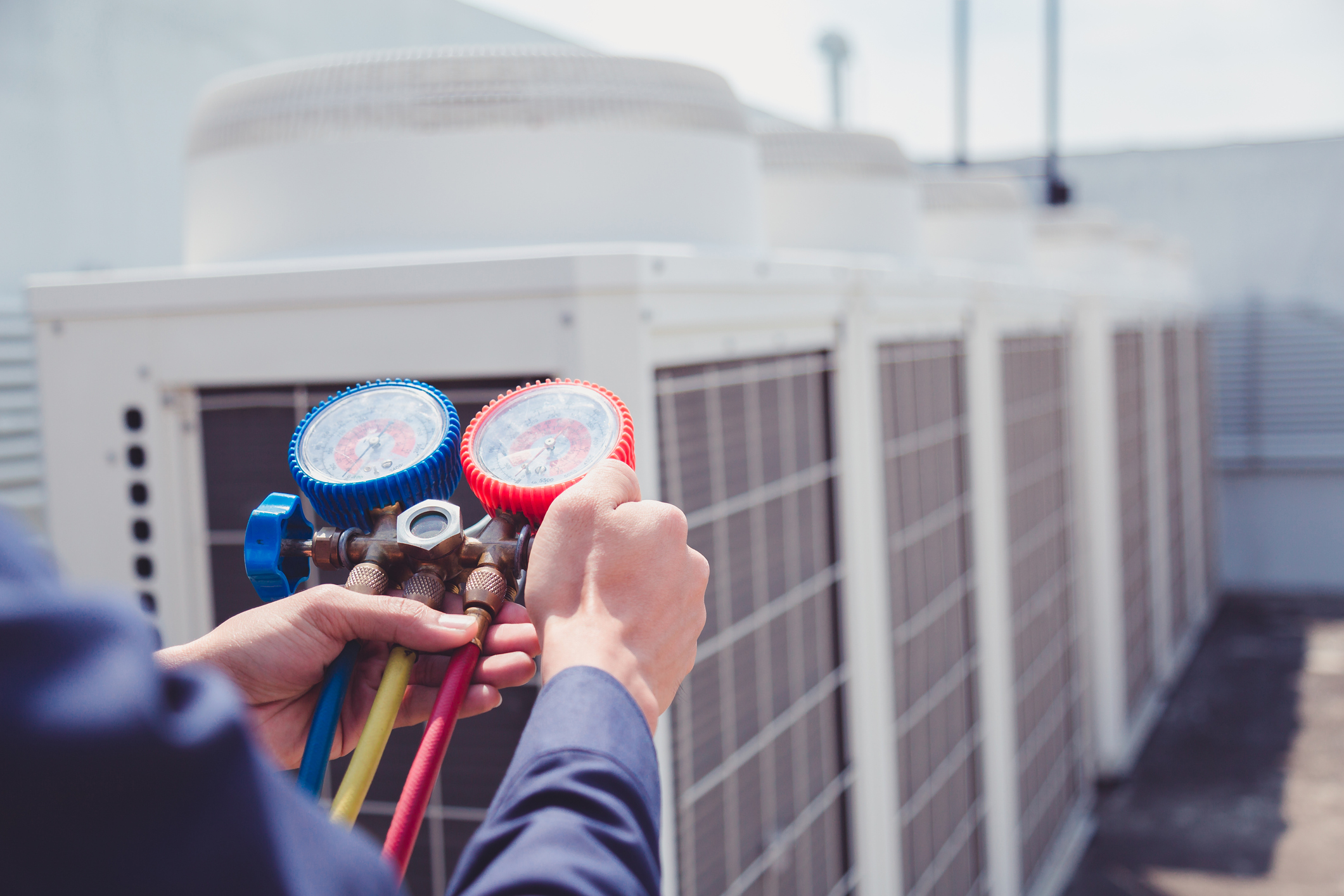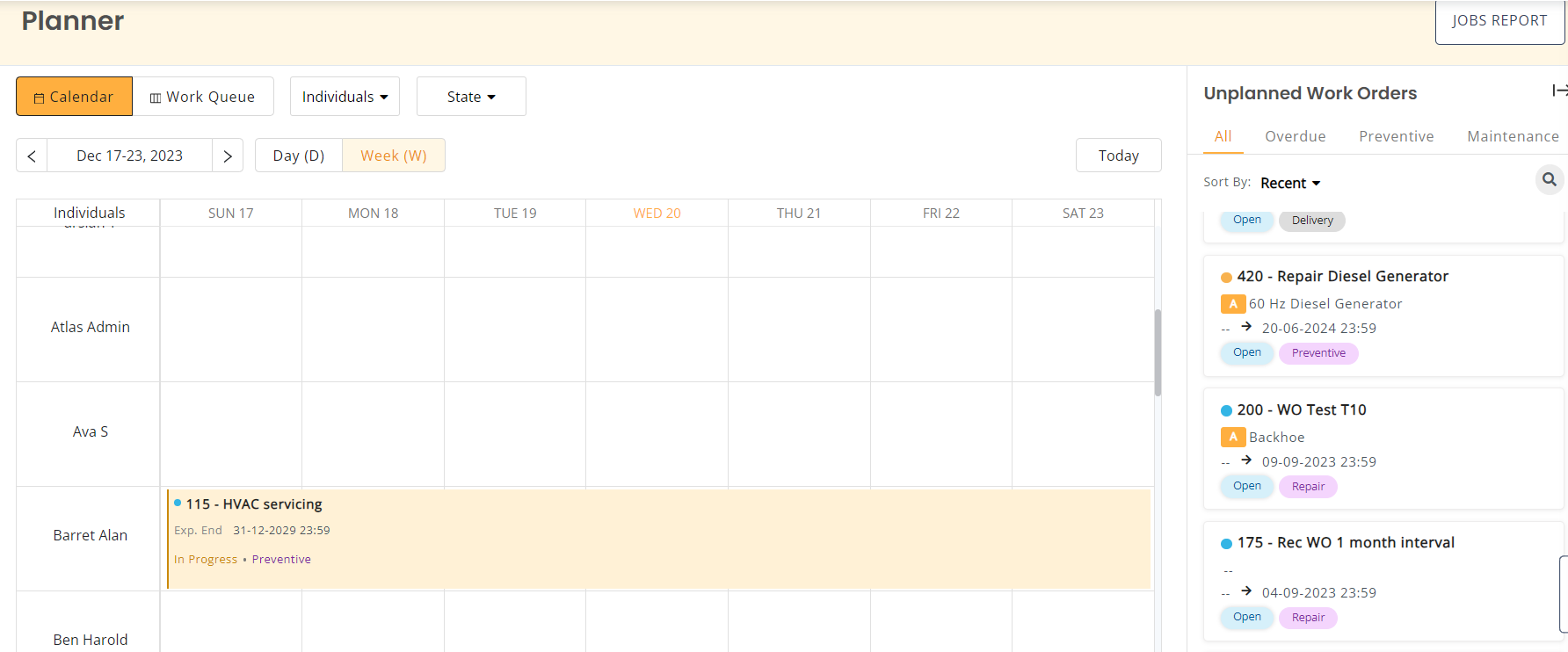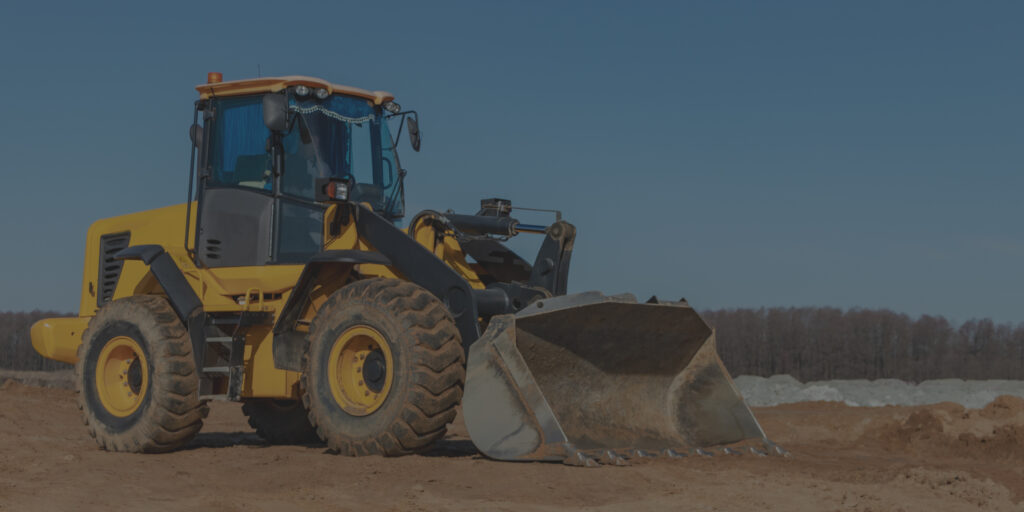Equipment, machinery, and other physical assets are the backbone of industrial enterprises. Factories, plants, and similar facilities heavily rely on various physical assets to perform their daily operations.
However, when equipment experiences unplanned downtime, outages, and untimely failures, the organization can face significant operational disruptions, decreasing productivity and the bottom line.
As a result, organizations prioritize protecting their assets to prevent equipment breakdowns and unnecessary maintenance costs. Investing in physical assets requires significant time and money. Therefore, proper equipment lifecycle management is essential to fully capitalize on these investments.
Organizations can maximize the useful life of equipment and other physical assets through strategic management of the entire equipment lifecycle, avoiding unexpected breakdowns.
From procurement to retirement, they can optimize their physical assets for long-lasting performance and improved return on investment. Using CMMS software can further improve outcomes by increasing equipment lifespan.
What is the equipment lifespan
Equipment lifespan refers to the period for which a piece of equipment or machinery remains fully operational and effective for its intended purpose. It’s the duration from when the piece of equipment is first put into use until it becomes obsolete or no longer economically viable for the organization to maintain.
Factors such as the quality of the equipment, the intensity and nature of its use, and the effectiveness of repairs and maintenance performed over an equipment’s operational life significantly impact its lifespan.
The longer the equipment lifespan, the better the return on investment for the organization as there will be less need for frequent repairs or replacements.

Example of equipment lifespan
An example of equipment lifespan can be seen in a large office building such as a commercial HVAC (heating, ventilation, and air conditioning) system. Usually, an HVAC system has a lifespan of around 15 to 20 years if maintained properly. During this time, it efficiently regulates temperature and air quality, providing a comfortable working environment.
However, once its useful life passes by, its efficiency declines, leading to frequent repairs and increased energy consumption. Consequently, organizations need to consider replacing the system with a new, more energy-efficient one. Thus, in this example, the 15-to-20-year period reflects the lifespan of the HVAC system in a facility setting.
What is the useful life of equipment
The useful life of equipment is the estimated number of years a piece of equipment or machinery will remain in service while generating financial value for the organization. Useful life estimate aims to determine how long the equipment will remain in operational condition. From a financial perspective, it means the duration in which the equipment will generate economic benefits for the business.
Example of the useful asset life
Let’s consider an example of the useful asset life. Let’s say there’s a machine X which was purchased 10 years ago for $10,000. Over the last six months, the machine experienced a breakdown multiple times, incurring $5,000 in repair expenses.
While the machine may still be operational, from a financial standpoint, its continued use might not be economically viable for the organization.
The importance of useful life estimates
Let’s discuss the importance of useful life estimates. Usually, the useful life of equipment has long-term implications across several aspects of your business.
Accounting
The rates of depreciation significantly impact your balance sheets, income statement, tax liability, and cash flow (indirectly). Knowing the useful life of an asset is important for accurately calculating depreciation.
Financial planning and budgeting
Understanding useful life and depreciation is important because it tells you how long you have before requiring significant investments to replace critical assets. This understanding is critical for medium—and long-term financial planning and budgeting.
Maintenance and safety
Routine maintenance of equipment and facilities is necessary to ensure maximum workplace safety. Failure to perform regular maintenance can lead to catastrophic equipment failures and accidents. Monitoring useful life estimates of assets will help develop effective preventive maintenance schedules.
Asset salvage value
At the end of the service life of an asset, you can recoup at least a portion of your initial investment by selling it. The salvage value is another crucial component of depreciation calculations. You need to know the asset’s useful life to accurately estimate asset salvage value.
Factors that impact useful life of assets or equipment
Several internal and external factors can impact the useful life of an asset or equipment. These factors can be physical, financial, or even technological in nature. Below, we have listed down some important factors to consider while assessing the useful life of an asset:
- Asset condition purchase: A new asset will likely last longer than a previously used one.
- Usage patterns: Assets used more are likely to experience more wear and tear. Similarly, buildings and equipment that remain unused for longer periods may also witness a significant decline in useful life.
- Climate/geography: Assets located in areas or regions with extreme weather conditions or prone to natural disasters like floods, fires, etc., might need lower useful life estimates.
- Technology: With technological advancements, certain assets can lead quickly to obsolescence. Computers and mobile devices are good examples of assets that become outdated relatively quickly.
- Government/compliance: With the current climate crises, government and compliance factors have gained significance. Assets and equipment that do not meet latest environmental norms will have a reduced service life.
- Incidents and major breakdowns: These can reduce lifespan of assets. Maintenance professional should monitor asset conditions and warn stakeholders about potential need to adjust useful life estimations.
What are the ways to calculate useful life of an asset
Essentially, there are two ways to calculate the useful life of the asset: straight-line depreciation and accelerated depreciation. Let’s explain each method in detail.
Straight-line depreciation
The straight-line depreciation method involves deducting annual depreciation in equal installments throughout an asset’s useful life. This results in a steady decrease in the asset’s value as the same amount is written off every year.
This method is the easiest and simplest for calculating asset depreciation. Consequently, it is less prone to errors, becoming the preferred method in most situations. It is ideal for fixed assets whose value is most likely to experience a steady decline over the years.
Let’s discuss an example of a commercial building here. Consider there’s a new commercial building whose worth is $1,00,000 and has a standard useful life of 30 years. The estimated value of the land is $200,000. By subtracting the land value from the asset cost, you can get $800,000. Now, divide this amount by the useful life to get $26,666. This amount is the annual depreciation value for the building over those 30 years.
Accelerated depreciation
The accelerated depreciation method is the most appropriate approach for assets like computers and mobile devices that become obsolete more quickly than other physical assets. The sharp decline in the asset’s value in the initial years replicates this trend.
It reflects common usage patterns, where newly acquired assets are heavily used in the initial years, leading to wear and tear. Organizations may opt for this depreciation method for specific tax strategy reasons.
Here’s an example of accelerated depreciation. Let’s suppose an organization purchases a CNC machine with a useful life of 10 years for $200,000.
As the equipment was heavily used in its initial years, the organization wants to use an accelerated depreciation method. The estimated salvage value of the machine was $20,000. With the straight-line method, the annual depreciation is $18,000, or around 9%. Increasing this rate by 150% makes the depreciation rate 13.5%.
The value of the machine would depreciate by $27,000 in the first year. In the second year, the rate will be 13.5% of the current book value of $173,000, amounting to $23,350. Using the same formula, we have calculated the depreciation for the following years:
Year 1: $27,000
Year 2: $23,350
Year 3: $20,190
…
Year 10: $7317
At the end of year 10, accelerated depreciation will leave the machine’s value at $46,935. The difference between this and the salvage value ($26,935) is usually recorded as expenses in the accounting books.
What is equipment lifecycle
Equipment lifecycle refers to the overall lifespan or lifecycle of a physical asset such as a piece of equipment or machinery. A physical asset can be a small tool such as a power drill or something large such as an airplane. Irrespective of the size, every asset plays a significant role in leveraging the overall productivity of an organization.
Organizations that heavily rely on physical assets understand the importance of asset optimization for long-term success and optimal performance. This asset optimization includes extending the equipment lifecycle, enabling organizations to derive maximum benefits from their assets for the longest time.

Stages of equipment lifecycle
The equipment lifecycle comprises four stages: planning, procurement/acquisition, operation/maintenance, and disposal. Each stage of the equipment lifecycle is essential in ensuring the extended longevity and optimal performance of an asset.
1. Planning
The first stage of the equipment lifecycle involves strategic planning for acquiring or replacing a new piece of machinery or equipment. With proper planning, organizations can evaluate their needs and devise a cost-efficient strategy to acquire a new asset.
2. Procurement/Acquisition
The second stage of the asset lifecycle is procurement/acquisition which involves purchasing the asset. Before acquiring, organizations must make a budget and negotiate costs to ensure the purchase is as economical as possible. As soon as the purchase is finalized, the asset is assembled and included in the organization’s inventory.
3. Operation/Maintenance
The third stage is referred to as operation or maintenance and is considered the longest phase of the equipment lifecycle. It involves using the asset for its intended purpose and maintaining it properly to improve its performance over time. Strategic asset maintenance often also includes using CMMS software and predictive maintenance tools to optimize maintenance workflows throughout the equipment lifecycle. Using a maintenance management solution such as EZO CMMS can enhance equipment performance throughout its lifecycle.
4. Disposal
This is the final stage of the equipment lifecycle, involving proper disposal of the physical asset. No matter what, organizations cannot overlook this stage as they are required to follow various environmental and safety regulations while disposing of an asset. Equipment disposal involves safely discarding and dismantling it while complying with essential regulations to protect employees and the work environment from any potential hazards.
How to maximize equipment lifespan
Truth be told, no organization can afford to frequently replace equipment; therefore, maintenance managers must look for ways to maximize equipment lifespan. Let’s discuss some simple, proactive measures that can help organizations protect their investments.
Perform electronic inspections
Performing regular equipment inspections helps organizations obtain an understanding of the condition of their equipment, enabling them to promptly identify issues. By implementing routine inspections, maintenance teams can monitor equipment health daily, weekly, monthly, or by usage.
Unlike paper inspection forms, electronic inspections, performed via mobile apps, deliver immediate results, preventing delays in resolving equipment issues. This proactive approach helps organizations maximize equipment lifespan as maintenance managers receive instant alerts of inspection failures, enabling them to start scheduling repairs quickly.
Perform preventive maintenance regularly
One of the key strategies to extend equipment lifespan is performing proactive preventive maintenance. However, many maintenance teams struggle with performing routine maintenance tasks. Creating a preventive maintenance schedule ensures regular servicing and monitoring equipment health over time.
It can be challenging to manage various maintenance schedules. That’s where maintenance management software steps in as it allows you to easily schedule and monitor maintenance tasks. You can also set automated maintenance schedules according to your equipment usage or calendar intervals and receive timely alerts for upcoming tasks.
Also, including small tasks such as cleaning and lubrication in your maintenance schedule can significantly enhance your equipment lifespan.
Implement an effective maintenance workflow
It is essential to have an effective maintenance strategy to maximize equipment lifespan as it allows proactive maintenance and real-time monitoring of equipment condition.
Organizations can use maintenance management software to perform streamlined maintenance on their equipment. Centralized tracking and mobile app communication help solve problems efficiently and maximize equipment utilization.
Enable remote team collaboration
Communication barriers are one of the biggest challenges for maintenance teams when it comes to improving productivity. It is essential to have a way to monitor repair progress and track equipment status to maximize equipment lifespan.
Using maintenance management software and its mobile app can enable you to remotely collaborate with your team and receive real-time status updates from any location. Team members can use the app to update equipment status, perform inspections, and comment on equipment issues within the app to keep managers informed in real-time.
Streamline maintenance tasks with work orders
It is not easy monitoring maintenance tasks across a wide range of equipment or assets. However, maintenance management software streamlines maintenance tasks by creating and managing work orders, enabling you to easily monitor progress.
Work orders can be created based on inspection failures, preventive maintenance reminders, or other identified issues. Supervisors can assign maintenance tasks to technicians and monitor repair progress easily.
Work order management software also provides complete audit records of repairs for each piece of equipment. By reviewing each task, you can ensure all maintenance tasks are completed and gain insights into equipment conditions.
Monitor maintenance costs
Maintenance is a major ongoing cost for facilities, significantly impacting return on investment. While maintenance itself is costly, replacement costs, even for small tools, can affect your budget.
Enhancing equipment lifespan is crucial, but monitoring maintenance costs is equally important to understand when repair costs offset replacement costs.
By using a maintenance management solution, you can track your maintenance costs effectively and find out the best time to replace your equipment. Comparing equipment health data with real-time expense reports can provide insight for maintenance managers, helping them make data-driven decisions regarding equipment.

Enhance equipment lifespan with CMMS
Thanks to advanced technology, equipment lifeycle management has become streamlined. Robust tools such as EZO CMMS, a maintenance management solution, help organizations manage enterprise equipment for an extended time. What’s more, it helps centralize essential asset data, simplifying maintenance workflows and enhancing efficiency.
EZO CMMS helps increase equipment lifespan by scheduling and automating preventive maintenance to reduce wear and tear. Quick identification of issues ensures repairs are done on time, preventing further damage. It also centralizes data for informed decision-making on equipment repair and acquisition and streamlines workflows to reduce downtime and extend equipment life. Last but not least, investing in EZO CMMS ensures a longer, more productive equipment lifecycle.
Frequently asked questions
What is equipment lifecycle?
Equipment lifecycle is the entire lifespan of physical assets, impacting an organization’s productivity and return on investments. Organizations can maximize equipment lifespan by deploying strategic asset management processes.
What is the life period of equipment?
As per economists, the average lifespan of typical equipment, especially farming machinery, is 10 to 12 years, whereas tractors can last up to 15 years. However, equipment lifespan also depends on the usage and storage conditions.
What is the life expectancy of heavy equipment?
The average life expectancy of heavy equipment, such as a wheel loader, is about 10 years or somewhere between 7,000 to 12,000 working hours. The longevity of the equipment is impacted by the intensity of labor, compliance with maintenance routines, and the operator’s skill level. Harsh operating conditions can limit their lifespan.








